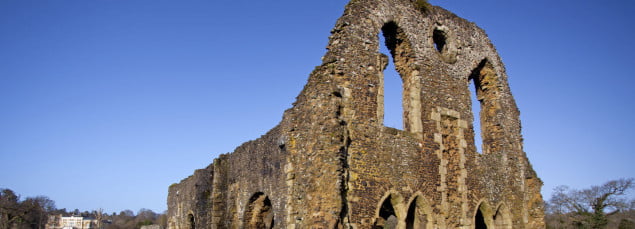About
England’s first Cistercian abbey was built near Farnham. The now ruins of Waverley Abbey are situated in a peaceful loop of the River Wey and still give an impression of the solitude experienced by the monks who founded a monastery here almost 900 years ago.
The monastery at Waverley, the first Cistercian abbey to be established in England, was founded by William Gifford, Bishop of Winchester, in 1128. It was colonised with 12 monks and an abbot from Aumone in France. By 1187 there were 70 monks and 120 lay brothers in residence. In 1201 the abbey buildings were badly flooded. This became a common occurrence and as a result the abbey was substantially rebuilt during the 13th century. It continued to grow in the 14th century. The monks and lay brothers farmed the surrounding land, were active in the Cistercian wool trade and provided shelter for pilgrims, travellers and an infirmary for the sick.
In 1536, with the dissolution of the monasteries, the site passed to Sir William Fitzherbert, treasurer of the king’s household. Much of the abbey was dismantled and some of the stone was reused to build Sir William More’s house at Loseley, a few miles to the east.
Today the site is managed by English Heritage and is free to visit. Only parts, some substantial, of the buildings remain standing, although archaeological excavation has recovered the complete ground plan.
Don’t miss the graphic panels that tell the story of this important monastery.
Opening times: Daylight hours
Please note: dogs on leads are allowed and limited parking is available.



